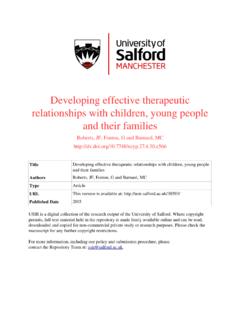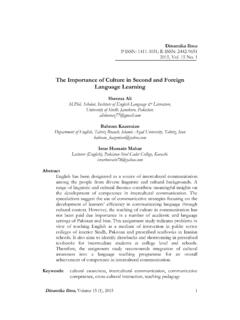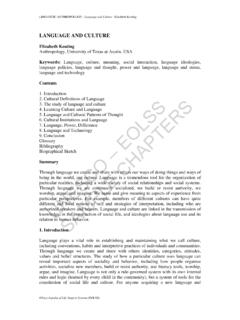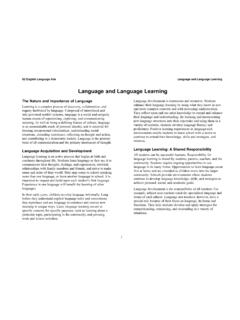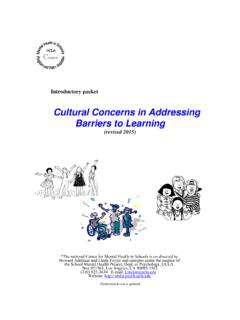Transcription of First Language Acquisition Vs Second Language Learning ...
1 1 First Language Acquisition Vs Second Language Learning : What Is the Difference? Fawzi Al Ghazali The University of Birmingham / The Centre for English Language Studies (CELS) / July 2006 _____ Abstract This paper investigates the potential differences between First Language Acquisition (FLA) and New Language Learning (NLL) in the classroom. It examines the factors that influence Language Acquisition in the two different environments. This includes explication of the age factor and its impact on progress in Language Acquisition . It also involves studying the Language input in terms of quantity and quality in both cases and the limitations of NLL in the classroom.
2 This paper also studies the individual differences that influence Language Acquisition . This covers Language aptitude, Language anxiety, Language ego, and motivation. This paper, moreover, studies approaches to FLA like behaviourism, innatism, and interactionist position. It finally explains more explicitly how the teaching techniques influence the progress students achieve in Learning a new Language . Key Words: First Language Acquisition , Second Language Acquisition , Language anxiety, Language ego, motivation, Language aptitude, behaviourism, innatism, interactionist approach 2 1. Introduction Language Acquisition is one of the most impressive aspects of human development.
3 It is an amazing feat, which has attracted the attention of linguists for generations. First Language Acquisition (FLA) and New Language Learning (NLL) have sometimes been treated as two distinct phenomena creating controversy due to their variability in terms of age and environment. Oxford (1990: 4) in distinguishing between FLA and NLL argues that the First arises from naturalistic and unconscious Language use and in most cases leads to conversational fluency; whereas the latter represents the conscious knowledge of Language that happens through formal instruction but does not necessarily lead to conversational fluency of Language .
4 Fillmore (1989:311) proposes that this definition seems too rigid because some elements of Language use are at First conscious and then become unconscious or automatic through practice. In another point of view, Brown (1994: 48) argues that both Learning and Acquisition are necessary for communicative competence particularly at higher skill levels. For these reasons, it can be argued that a Learning Acquisition continuum is more accurate than a dichotomy in describing how Language abilities are developed. The interrelation between Learning and Acquisition does not prevent argument around the long list of limitations of NLL in the classroom.
5 Allwright (1987: 209), in his query 'why do not learners learn what teachers teach?', argues that the apparent failure of teaching to have a significant effect on Learning can be ascribed to the failure to realise that planned teaching is only one part of the input available to classroom Language learners, even outside the four walls of the classroom. Hence, formal and informal Language Learning are interwoven, acting as the two axes of Language fluency. Native speakers' speed of articulation is affected not only by their ability of retention, but also by the amount of prefabricated chunks stored in the long-memory and retrieved when needed, a skill which promotes fluency.
6 3 This paper considers five prominent areas of difference between FLA in the pre-school period, and NLL in the classroom. These are as follows: age factor, input, approaches to FLA, classroom methodology, and psychological factors. My discussion of NLL in the classroom is influenced by the progress my own students achieve in their NLL (English) in the classroom, which represents the main source of input for most of them. 2. Differences between FLA and NLL Age Factor Do children learn languages better than adults do? Most linguists believe this is the case. Harley (1986: 4) and Lightbown and Spada (1999) argue that.
7 Childhood is the golden age for creating simultaneous bilingual children due to the plasticity and virginity of the child s brain to make for superior ability specifically in acquiring the early sets or units of Language (1999: 29). This mental flexibility signifies the privilege attained by children over the adults in Learning languages, which is probably also due to the muscular plasticity used in the articulation of human speech by children to produce a nativelike accent. Brown (1994) claims that this ability is almost missing after puberty and this may explain the difficulty encountered by some adults in acquiring a native-like accent, regardless of the way in which they learn new languages.
8 'Children who acquire a Second Language after the age of five may have a physical advantage in that phonemic control of a Second Language is physically possible yet that mysterious plasticity is still present. It is no wonder that children acquire authentic pronunciation while adults generally do not, since pronunciation involves the control of so many muscles (Brown, 1994: 51).' According to Brown s argument, young children can sound similar to their new- Language classmates very quickly and if young enough can become native speakers of the new Language , with all the cultural background that this implies. Adults, on the other hand, can rarely gain the depth of cultural background that makes a real native speaker of a Language .
9 Ehrman (1996:180) renders this 4 to the Critical Period Hypothesis (CPH), which may lead to adult resistance of Language Learning . According to the CPH, adults no longer have the same plasticity as children that would enable them to cope with new mental activities. The difficulty faced by adults to attain a nativelike fluency could be due to the fact that the developmental changes in the brain that affect the nature of Language Acquisition after the end of the critical period are no longer based on the innate biological structures claimed by Chomsky (1981) to contribute to FLA or NLL in early childhood. Vygotsky (1978) explains the CPH in a different way.
10 He argues that the adults tend to be more analytical in Learning languages unlike children who tend to be more holistic. Children acquire the Language as it is formed and produced by others whereas the adults often think of how a construction is formed before using it in conversation. The impact of the CPH on NLL, nevertheless, does not receive the consensus of all linguists and classroom researchers. Lightbown and Spada (1999: 60) give the example of a study carried out by Snow and Hoefnagel-Hohle on a group of English speakers Learning Dutch as a Second Language . This research was especially valuable because it included learners from all age categories, from six to sixty year olds.
